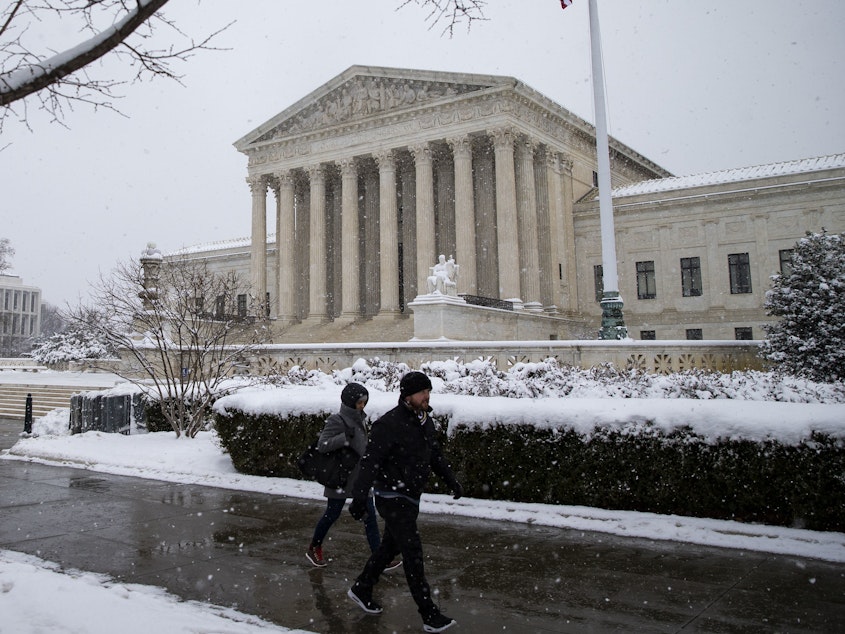Supreme Court Revives Trump's Ban On Transgender Military Personnel, For Now

The Supreme Court has reinstated President Trump's ban on transgender service members in the military, granting a stay on two lower courts' injunctions that had blocked the president's policy. The court voted 5-4 margin, reflecting the conservative majority.
The court's decision allows the Pentagon to bar transgender people from joining or remaining in the military while the lower-court rulings that had blocked the policy are appealed. The justices did not allow the Trump administration to leapfrog the appeals court, as it had requested.
The two cases — Trump v. Karnoski and Trump v. Stockman — are currently working their way through the U.S. Court of Appeals for the 9th Circuit.
In both of those cases, Justices Ruth Bader Ginsburg, Stephen Breyer, Sonia Sotomayor and Elena Kagan would have maintained a stay on the ban, the Supreme Court order reads.
The transgender ban is being revived more than a year after a U.S. district judge in Washington, D.C., ruled that trans members of the military had "a strong case that the president's ban would violate their Fifth Amendment rights," as NPR reported in October of 2017.
Sponsored
The Human Rights Campaign, which is involved in the Karnoski case, condemned the Supreme Court's decision, saying it "thrusts this administration's discriminatory agenda onto a military that clearly doesn't want it, and does so at the expense of transgender people's careers and service."
Trump announced his ban abruptly in the summer of 2017, saying in a series of tweets that "the United States Government will not accept or allow...... ....Transgender individuals to serve in any capacity in the U.S. Military."
The ban seemed to take Defense Department officials by surprise, sparking confusion despite Trump's assertion that he had consulted with "with my Generals and military experts."
The tweets were followed by an official presidential memo in August, which gave the defense secretary (and, for the Coast Guard, the homeland security secretary) the discretion to "determine how to address transgender individuals currently serving in the United States military."
Trump's ban was a sharp reversal of a Pentagon policy that was announced in June of 2016, when former Defense Secretary Ash Carter said, "Effective immediately, transgender Americans may serve openly, and they can no longer be discharged or otherwise separated from the military just for being transgender."
Sponsored
At the time, researchers at RAND estimated there were as many as 7,000 active-duty transgender servicemembers, with up to 4,000 more in the reserves. That Obama-era policy was hailed as ending an era of legal and professional limbo for trans people in the U.S. armed service; Carter said the decision was made out of a desire to attract "all talent possible" to serve in the military.
Because of that policy and the lower court's injunction, the first openly trans people were able to join the U.S. military on Jan. 1, 2018. But their status is once again in jeopardy.
Tuesday's order states that if the 9th Circuit court rules against the ban, the prohibition on trans members of the military would remain in effect until the Supreme Court justices either deny an application to hear the case (if such an application is made) or rules against the Trump administration's position.
NPR's Domenico Montanaro contributed to this report. [Copyright 2019 NPR]



